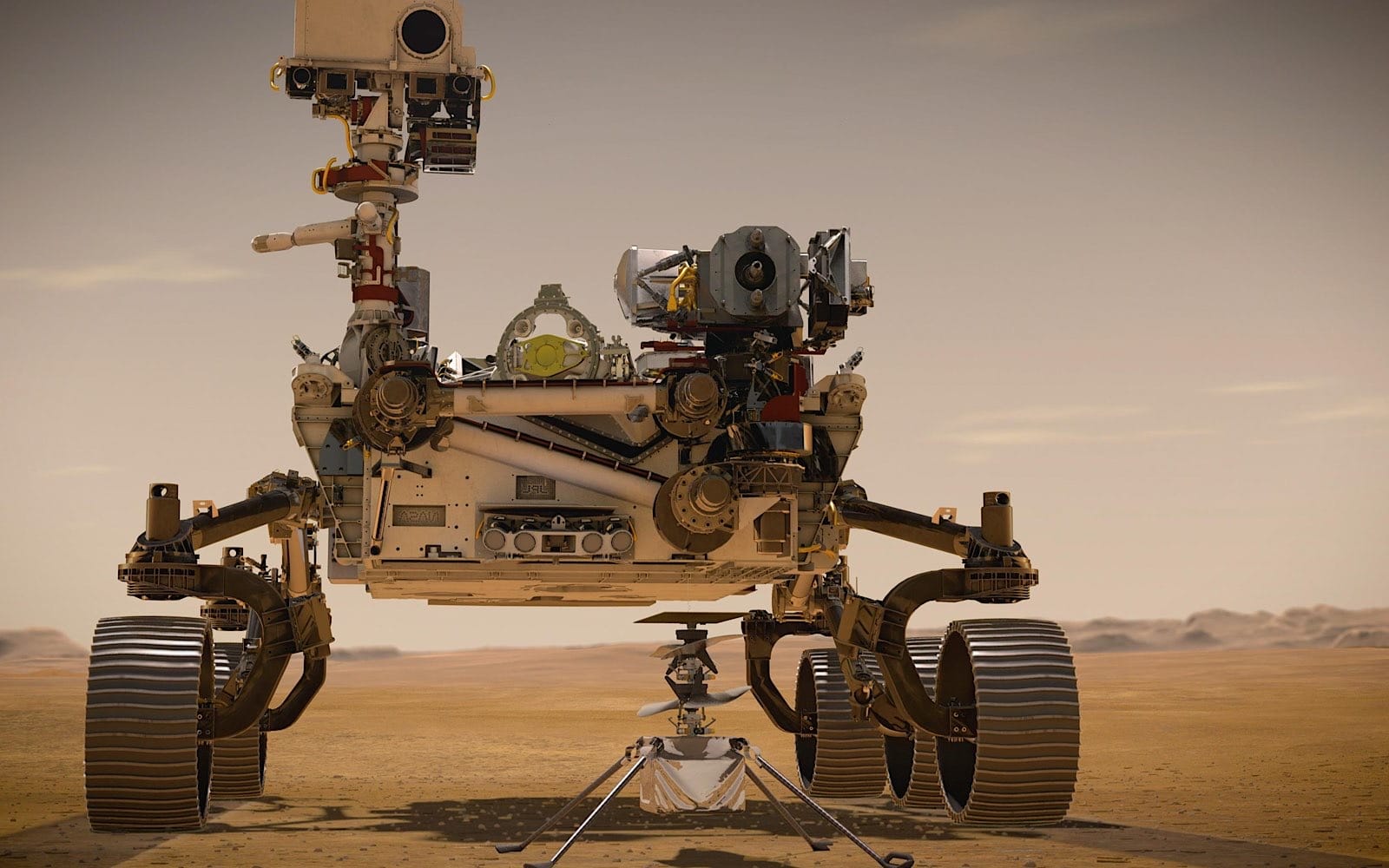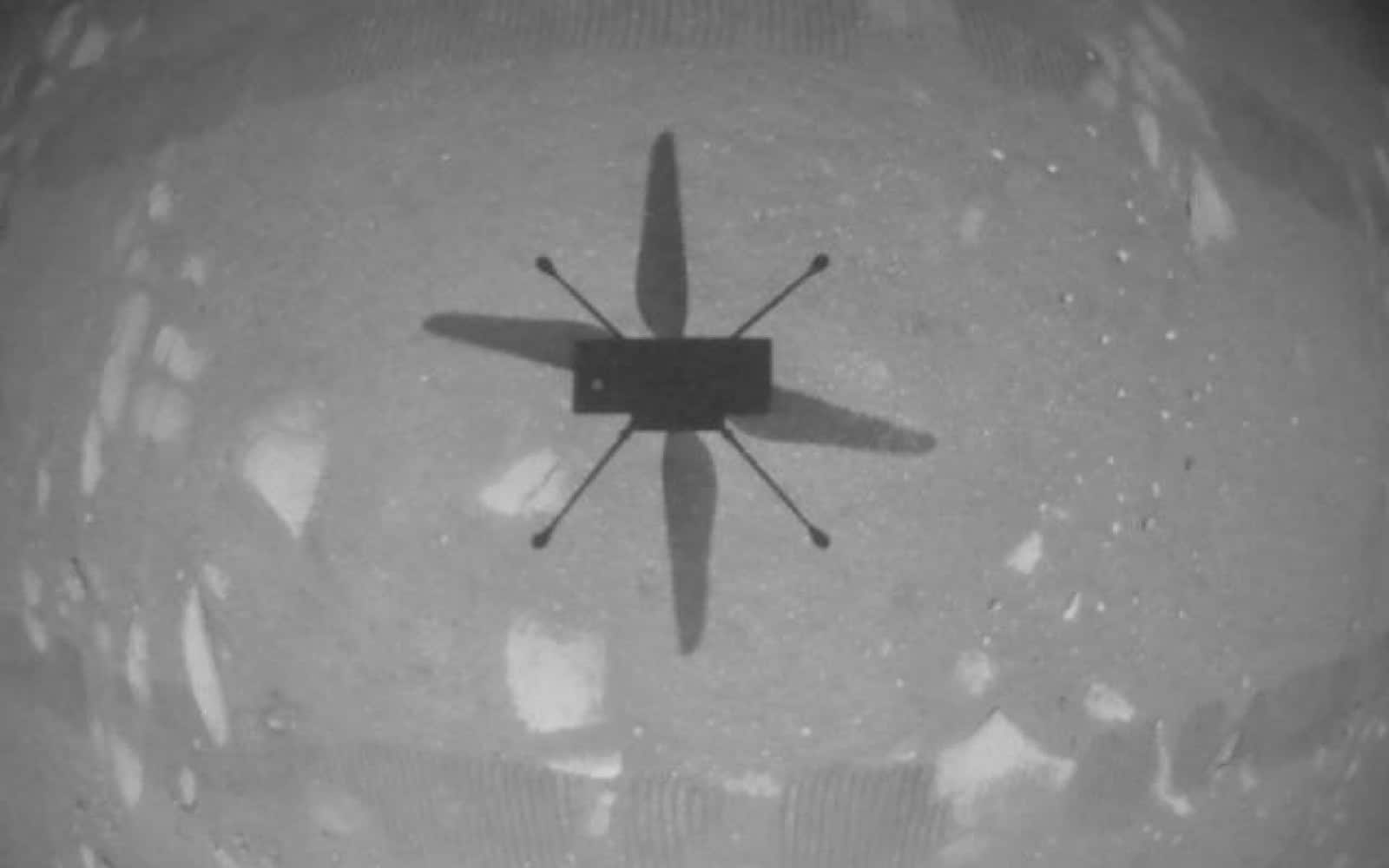The first flight on another planet has been achieved, as the Ingenuity helicopter attached to the Perseverance rover takes off.
Humans have landed and walked on the moon, and they’ve created a space station and lived above the earth for weeks and months at a time, complete with a Google Street View experience for that last one. Now, though, they’ve done something else pretty impressive that was outer-worldly: they’ve flown a vehicle on a different planet from a different planet.
Like a Wright Brothers moment, NASA has made history this week controlling a flight on Mars from Earth, as the team at NASA’s Jet Propulsion Laboratory (JPL) took flight in the early hows of the morning with the Ingenuity helicopter attached to the Perseverance Mars rover that landed on the red planet back in February.
The solar powered helicopter took flight at midday on Mars time based on its team believing it would have the best conditions for flight and energy, and it climbed to 3 metres and remained in a hover for 30 seconds before touching back down to the surface of Mars. While 39 seconds of flight might not seem like a big exploration of the red planet’s surface, getting a helicopter to fly on another planet is a big deal as it is, and can be seen below captured by a camera on the Mars Perseverance rover.
The test is the first flight for Ingenuity, and was apparently handled in an autonomous fashion, because of the distance between Mars and Earth. According to NASA, algorithms did the work because of just how far everything is, making it impossible for Ingenuity’s flight to be handled by a joystick, and not even watched in real-time by the team at JPL and NASA.
However, it’s just the start, and could lead to more robotic exploration of Mars over time, now that NASA knows the system works and that Ingenuity can fly. The 49 centimetre-tall and 1.8 kilogram helicopter was built to see whether exploration of the planet could include a top-down aerial perspective, and that now seems quite possible.
“Ingenuity is the latest in a long and storied tradition of NASA projects achieving a space exploration goal once thought impossible,” said Steve Jurczyk, Acting NASA Administrator.
“The X-15 was a pathfinder for the space shuttle. Mars Pathfinder and its Sojourner rover did the same for three generations of Mars rovers,” he said. “We don’t know exactly where Ingenuity will lead us, but today’s results indicate the sky – at least on Mars – may not be the limit.”







